If you haven't tried them already, keep your eyes peeled for pretty purplish pink Hygrophorus russulas (formerly known as Hygrophorus purpurascens. It's an edible mushroom widely distributed in North America and Europe.
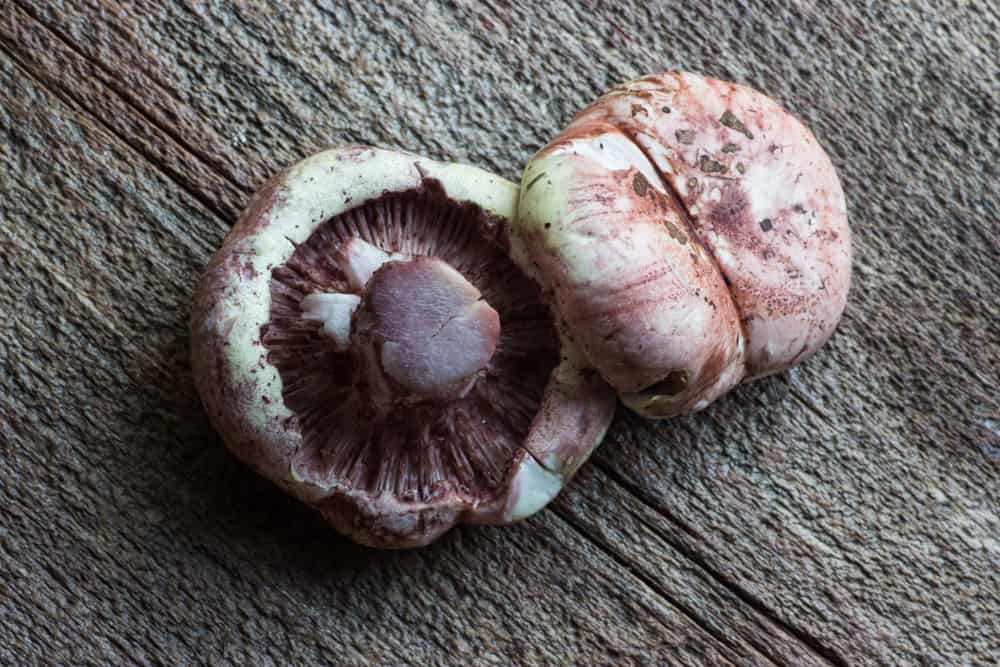
If you're familiar with mushroom hunting and foraging, you'll know Russula species can be tricky to identify, have their color vary, and are often infested with bugs.
A False Russula
Essentially a false russula, or a russula-like waxy cap, Hygrophorus russula only resembles other Russula in shape and size from my experience. It's technically in a completely different category of waxy cap mushrooms.
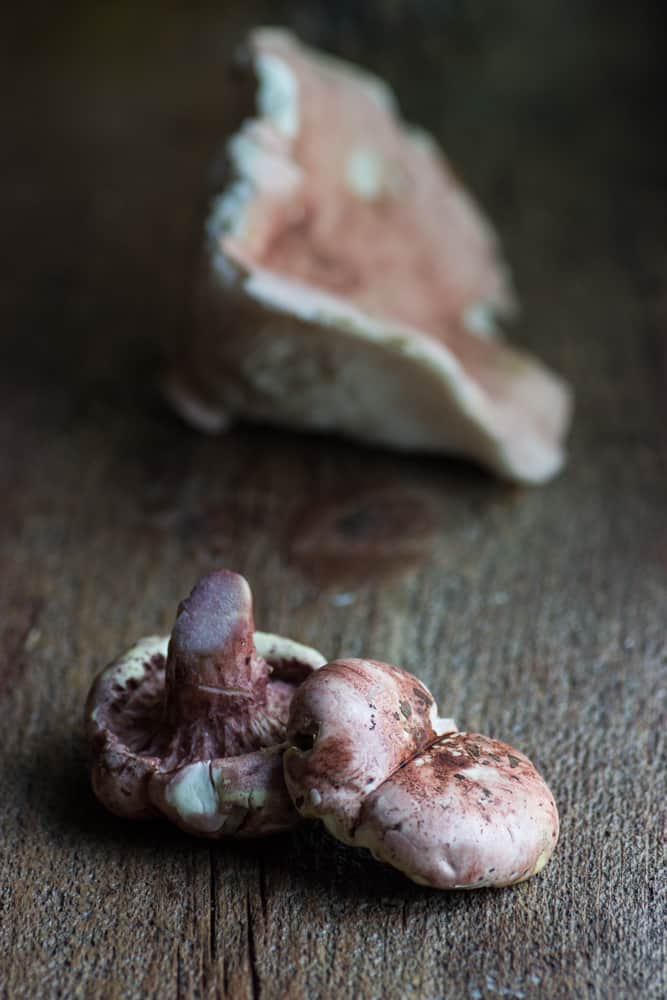
Young hygrophorus have a mottled pink color underneath cap. Older mushrooms (background) will have white gills as they age, and a broadly convex cap with a reddish pink coating that can peel off in places as it ages.
Identification Tips
- Growing with oaks
- Firm texture
- Waxy cap surface
- White spore print
- Mottled pink cap and gills
- Stipe is finely hairy
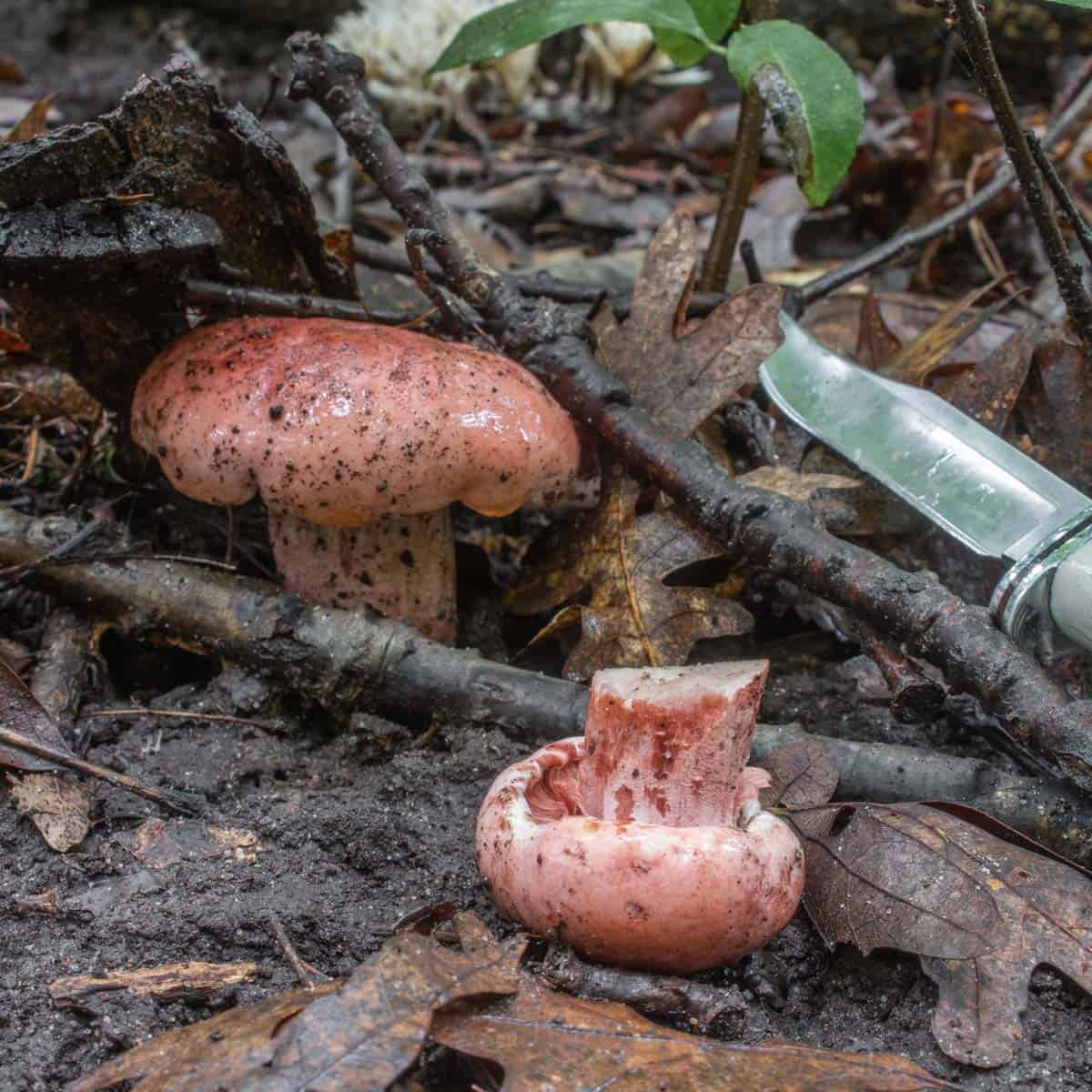
Habitat
These are mycorrhizal with oaks in mixed hardwood forests and should be widespread across North America. I find them in places with small amounts of leaf cover in areas where I see other edible mushrooms, growing in patches where I pick chanterelles, lobsters, and porcini.
All you need to find these is the right oaky mushroom terrain. I tend to see them in the late summer in the Midwest, typically around August-September. Occasionally I see them growing in large fairy rings.
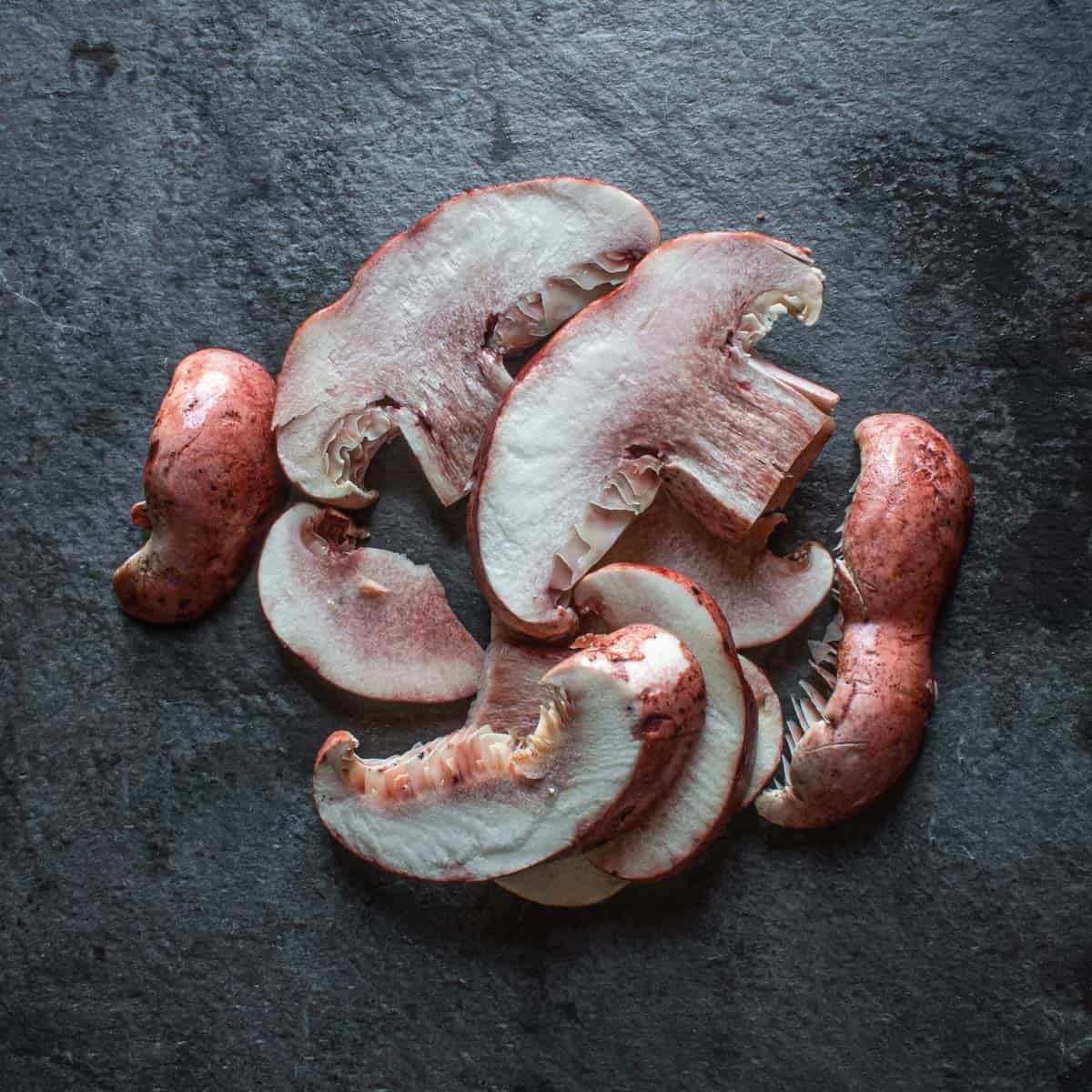
Cooking
I find their flavor ok, and mild. But they have a great resistance to bugs making them a mushroom worth putting in the basket.
For the sake of comparison, I treat these like a cultivated button mushroom, since their flavor is mild, and their texture near identical.
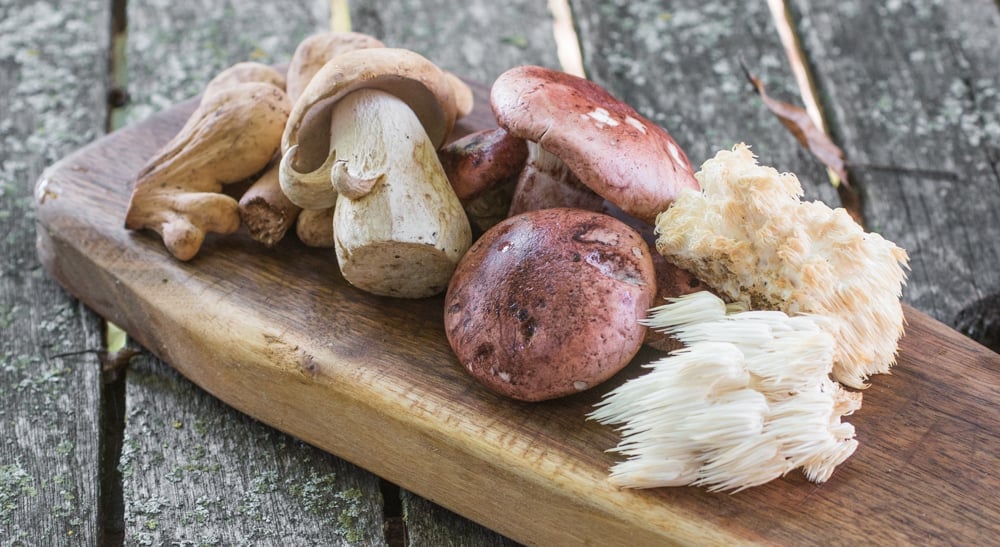
Some people report getting a waxy mouth feel or something similar when eating them. I haven't noticed this personally.
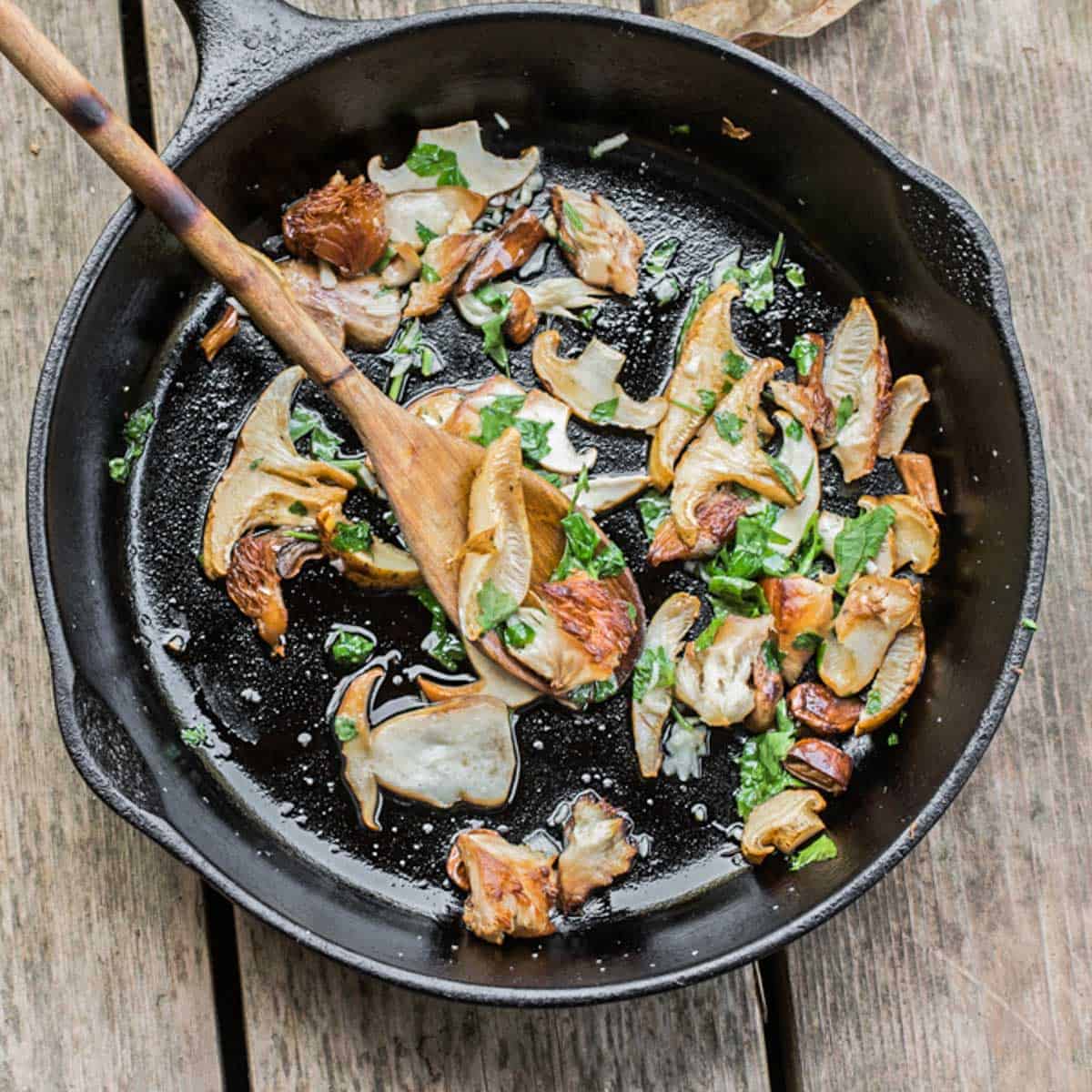
Preservation
These dry well when sliced thinly, and develop a slightly richer aroma like most mushrooms. They will make good pickles too, cut into quarters, sliced thick, or left whole if small.
Recipes
Recipes for Hygrophorus russula, or where they can be easily substituted.

Anne
Hello Allen, i found some HYGROPHORUS ERUBESCENS in the Yukon today, hoping they were H. russula, but, alas, no. I compared them to several images in books and websites, including your page here. Thank you!
It is interesting to find so-called north american-described mushrooms as "inedible" or poisonous.
And then to discover that they are eaten in other cultures and countries (mainly Russia, Scandinavia or Eastern Europe). I have not found any uses or recipes for H. erubescens yet, but perhaps you have? It used to be easier to find gems in other languages, from other cultures, when the internet was not as controlled.
I did a bite test and they are as mild-tasting as H. russula. I was excited to find so many here in the Yukon, this late in the year. Sigh! Fingers crossed you may have seen something somewhere! Thank you for all the ever-useful references and info that you dig up and provide!
Alan Bergo
Hi Anne, sorry I haven't tried these.
Will K.
I haven’t collected a lot of Russulas- really just R. parvovirescens and R. mariae. I know they get little respect as a group, but the Russula parvovirescens is really quite good. I'll have to check to see if this one's in my area.
Will
Jordain Brulotte
Just to make it clear these are not Russulas but are quite tasty. Lots of mushrooms in the Hygrophorus sp are pretty good.
Jack Skrceny
I just found some this morning. They are going in a Cream of Mushroom Soup.